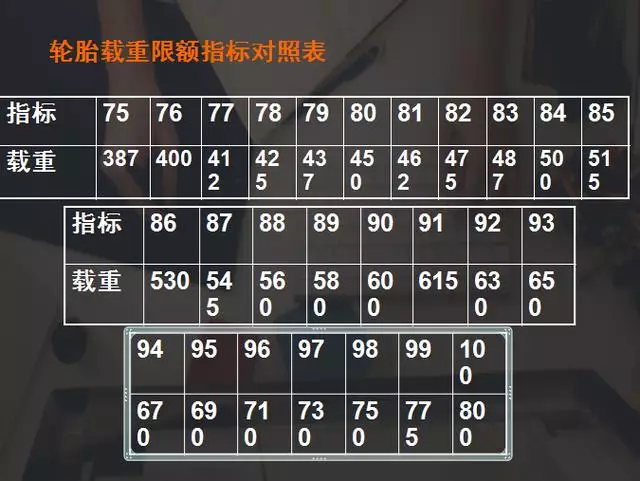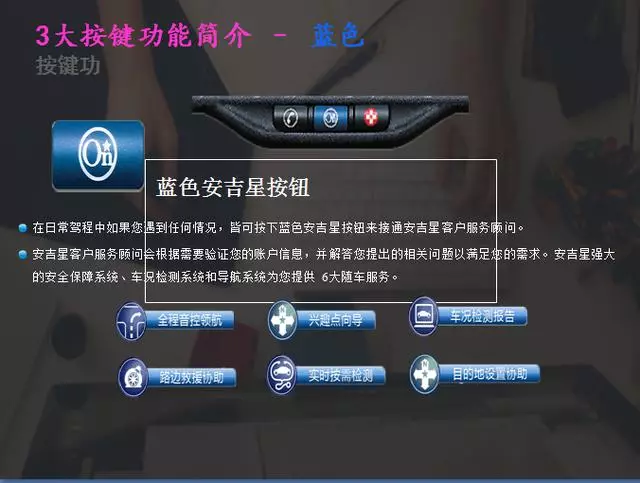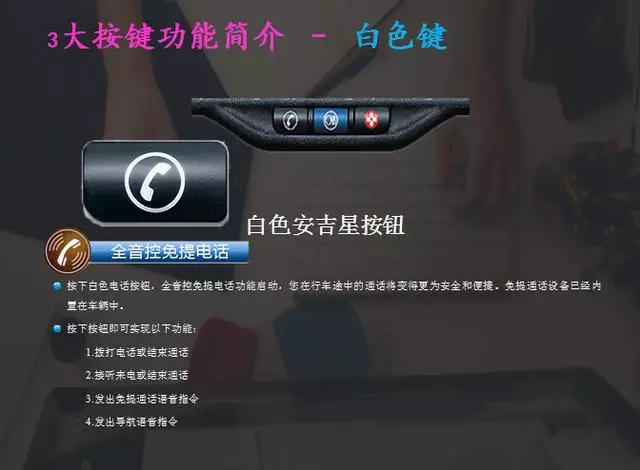Comprehensively summarize the basic information and materials of automobiles. If you don't understand, read here. If you don't understand, you will understand it. If you don't understand, continue to read it.
1. Basic structure of automobile:
Engine (engine): Body, ignition system, cooling system, lubrication system, starting device, fuel supply system
Electrical appliances: audio, air conditioner
Chassis: transmission system, driving system, steering system, braking system
Body: body shell, front end panels, door, window, exterior trim and interior trim, seat, ventilation, heating, air conditioning device, etc. Cargo boxes and other equipment are also included in trucks and special vehicles.
2. Engine definition:
Displacement: cylinder displacement refers to the volume of gas swept by the piston from the top dead center to the bottom dead center, which depends on the cylinder diameter and piston stroke.
Engine power: generally, horsepower or kilowatt is used to represent the size. The power of a metric horsepower refers to the force of lifting the weight of 75 kilograms by 1 meter vertically within 1 second.
Maximum power: indicates the engine performance. Generally, the larger the exhaust volume, the higher the maximum power of the engine.
Maximum torque: torque refers to the average torque output from the crankshaft end when the engine is running, which is equivalent to the "turning force" of the engine ". The larger the torque, the faster the change of crankshaft speed, the better the climbing ability, starting and acceleration of the car.
Combustion Chamber: the space between the cylinder cover and the piston top plane is called combustion chamber. (Generally refers to the upper stop point)
Compression ratio: refers to the ratio of the total volume of the cylinder to the volume of the combustion chamber, indicating the degree of compression of the mixture when the piston reaches the upper stop point. Large compression ratio indicates high power, high torque and low fuel consumption of the engine.
Stroke: When the piston reciprocates in the cylinder, the length from one end of the cylinder to the other is called a "stroke".
PCM: The Power assembly control module is short for short. Its main function is to process sensor signals, adjust ignition time and fuel charge, and ensure that the engine and gearbox are in the best working state.
3. Engine body:
Engine block: the cylinder cover, cylinder block, oil pan
Crankshaft connecting rod mechanism: Piston, piston ring, piston pin, connecting rod, crankshaft, bearing bush, Flywheel
Valve distribution mechanism: the function is to open or close the valve timely in accordance with the working cycle of the engine.
4. Engine features:
Ratio of inner diameter and stroke: short stroke, square stroke and long stroke.
Exhaust volume: inner diameter/2 * inner diameter/2 * P * stroke * number of cylinders
Compression ratio: between 8-10
Cylinder arrangement: inline, V-type, horizontal alignment, W-type
5. Ignition system:
Composition: Ignition control module, ignition coil, sub cylinder line, spark plug, knock sensor, crankshaft position sensor, CMP camshaft position sensor
Function: according to the working cycle of the engine, the spark plug is supplied with enough high voltage electricity at the specified time, making it produce spark to ignite the mixture, making the engine work
Ignition supply mode: Sensor & THORN; Computer & THORN; Ignition coil/sub cylinder line & THORN; Spark Plug
6. Lubrication system:
Composition: oil pump, oil filter, oil cooler, oil pan, oil filter, oil Channel
Functions: lubrication, cooling, corrosion prevention, sealing and cleaning
7. Cooling system:
Type: water-cooled, air-cooled
Composition: Radiator, cooling fan, radiator cap, thermostat, water pump
Antifreeze function: antifreeze, improve boiling point, descaling and cleaning, rust prevention
8. Fuel supply system:
Function: according to the requirements of various working conditions of the engine, a certain amount and concentration of inflammable mixture are configured to feed into the cylinder, so that it can be ignited and burned and expanded to do work near the end of compression. Finally, the combustion product-exhaust gas is discharged.
Air-fuel ratio (A/F): indicates the mixing ratio of air and fuel, which is generally expressed by the ratio of air quality to gasoline quality.
Theoretical air-fuel ratio: 14.7:1
9. Exhaust part:
Composition: exhaust manifold, three-way catalyst, exhaust pipe, muffler.
Function: reduce the resistance and noise of exhaust gas and purify the exhaust gas.
Three-Way Catalyst: it will lose 3%-4% of horsepower. It is composed of three rare metals such as platinum (Pt), palladium (Pd), and platinum (Rh). The main function is to transfer the exhaust gas (CO, HC, NOX) in the exhaust pipe. Conversion gas water vapor (H2O), carbon dioxide (CO2), and reduction to nitrogen (N2) and other harmless gases
10. Chassis-transmission system:
Composition: clutch, transmission, transmission shaft (Universal transmission device), reducer (final drive device), differential.
Clutch:
Composition: clutch pedal, clutch diaphragm, separation bearing.
Function: Separate and combine the power transmission between the engine and the gearbox. Ensure the vehicle starts smoothly and prevent the engine from overloading.
Manual Gearbox: change the power and turnover rate of the engine to the tire through gear transformation.
Function: a changes the transmission ratio through gear transmission, expands the rotation speed and torque by driving wheel, and realizes starting, accelerating and decelerating. B change the rotation direction through gear transmission to realize reversing c use neutral gear to interrupt power transmission, so that the engine can start and idle, and it is convenient for the transmission to shift or carry out power output.
Automatic transmission: use two signals, such as speed and throttle percentage, to determine the shift pattern.
11. Transmission speed ratio:
4T65E four-speed electronic control automatic
Gear 1 Gear 2 Gear 3 gear D gear R gear main reduction ratio ratio 2.92:1 1.57:1 1:1 0.7:1 2.38:1 3.29:1
When the engine speed is 5000 rpm, the tire speed is 5000/(3 gear speed ratio)/Main reduction ratio
12. Chassis-driving system:
Suspension gear: it is a device that floats the car body with spring on the wheel. It is a movable device composed of many elastic elements.
Function: a connects the body with the wheel to support the wheel with appropriate rigidity
B absorb the impact from the road to improve ride comfort
c stabilize the body posture during driving and improve the maneuverability.
Composition: elastic element, damping element, guide element (connecting rod, connecting arm, Balance Bar)
Damping element function: absorb the vibration of the spring, improve the comfort of riding, and guide element function: keep the wheel balanced during high-speed bending.
13. Suspension mode:
Non-independent suspension: simple structure, low cost, high strength, durability, large spring resilience, interference between left and right wheel movements, so it is not conducive to ride comfort and handleability and stability. It is mainly suitable for passenger cars and trucks with large load.
Independent suspension: The structure is complex and the cost is expensive, but the spring rebound force is small and the wheel has a large squeezing force on the road surface, so the riding comfort and handleability and stability are better. Mainly used for cars.
14. Tire representation method:
185/70R14 87s
185 indicates that the width of the tire is 185mm.
70 indicates flatness ratio, that is, the ratio of the height of the tire to the width of the tire.
R indicates that the tire is Meridian Line tire
14 indicates that the inner diameter of the tire is 14 inches.
87 is the tire load index, that is, the maximum weight that the tire can bear.
S is the upper limit index of tire speed, that is, the highest speed that the tire can tolerate.

15. Tire speed upper limit Index Comparison table
Code P Q R S T U H V Z speed 150 160 170 180 190 200 210 240 240 or more
16. Brake system:
Pascals principle: F1/S1 = F2/S2, in a sealed liquid or gas, the pressure at any point is the same.
Hydraulic principle: hydraulic oil pressure * hydraulic cylinder piston area = hydraulic cylinder pressure
The area of the main oil hydraulic cylinder piston is very small, and the area of each brake cylinder piston is much larger than that of master cylinder. The same pressure can make brake cylinder produce great output.
17. Brake device:
Drum brake: this is a brake device equipped with friction material within brake drum, and brake drum rotates with wheels. When the friction material is pushed outward against brake drum from the inside, the wheel can stop rotating.
Disc brake: this is a brake with a disc (disc) rotating with a tire and two friction materials on its outer side.
Gas resistance phenomenon: when the brake is operated by oil pressure, when it is frequently used, all parts will generate high temperature, making brake fluid boil, resulting in bubbles in the brake tube. Therefore, the force pressing the friction block is absorbed by these bubbles and the brake fails.
18.ABS anti-lock brake system:
Function: it can keep the vehicle out of control without being locked, maintain the steering wheel rotation ability, avoid accidents, instead of stopping the car immediately. ABS and non-ABS vehicles have equal braking distance.
Composition: wheel speed sensor, ABS computer, solenoid valve, oil pump.
19.ABS anti-lock brake system:
Tips: a When ABS brake system, the sole of the foot will feel a intermittent rebound and jitter. At this time, you must not loosen your feet, but continue to step on brake pedal until the car stops or the emergency is relieved.
B when you step on the brake with great force, you must calmly operate the steering wheel and gently turn the steering wheel to a safe road. Don't turn the steering wheel sharply because of panic, causing the loss of grip and flapping the tail. The vehicle will not listen to the command and hit something that shouldn't be hit.
c if the car is in manual gear, don't forget to press the clutch pedal on the left foot while pressing the brake on the right foot to prevent the engine from flameout, and then slightly turn the steering wheel to a safe direction.
20.TCS traction control system:
Purpose: to prevent the driver's careless operation, or the phenomenon that the vehicle is out of control due to excessive speed on particularly slippery detours. That is, when a tire loses its grip, the TCS can help you control it, allowing the vehicle to restore its grip without slipping and spinning its tail or losing control.
Operation mode: wheel speed sensor & THORN; Control computer & THORN; Ignition coil ABS, shift solenoid valve, fuel injector & THORN; Oil cut off, gear up, late ignition, automatic brake
21. Security performance:
Active safety: safety design adopted to prevent automobile accidents and avoid injuries to personnel. Such as TCS, ABS, AWD, windshield, rearview mirror, high level stop lamp, defogging, fog lamp, headlight automatic lighting, night vision instrument, etc.
Passive safety: safety design adopted to avoid or reduce injuries to personnel in car accidents, such as safety belt, airbag, energy absorption frame, side door traffic barriers fence, etc.
22. Vehicle maintenance:
Five oil: engine oil, automatic automatic transmission fluid, brake fluid clutch oil (manual), power steering fluid, gear oil or manual transmission fluid. Three water: coolant, battery fluid, windshield cleaning fluid.




